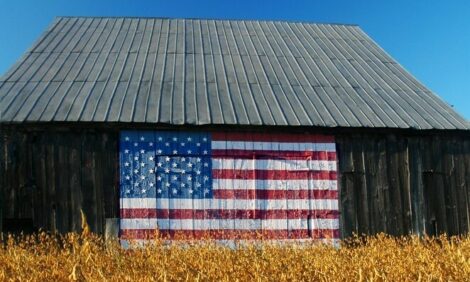



Pig News Round-Up
ANALYSIS - The pig market in the US finished 2011 in a strong position, based on the latest USDA inventories and recent pig meat export figures, writes Jackie Linden, senior editor of ThePigSite. With the ending of ethanol tax credits in the US at the end of December, the future of maize and thus, feed, prices looks somewhat uncertain in the US and across the globe.The inventory for all hogs and pigs in the US on 1 December 2011 was 65.9 million head, according to the latest Hogs and Pigs report from USDA. This was up two per cent from 1 December 2010 but down one per cent from 1 September 2011.
At 5.80 million head, the breeding herd inventory was up slightly from last year but down slightly from the previous quarter. At 60.1 million head, there were two per cent more market pigs than last year but one per cent fewer than the last quarter.
The September-November 2011 pig crop, at 29.0 million head, was two per cent higher than in the same period of 2010. Slightly more sows farrowed during the period than for 2010. Average pigs weaned per litter achieved a record of 10.02.
The US ethanol tax credit, worth roughly $6 billion, ended at the turn of the year. Industry watchers are undecided on the possible effects on the corn market and livestock producers.
Many in the country's ethanol industry believe they have built such secure foundations that its removal on 31 December will not have serious repercussions. Bob Dinneen of the trade group the Renewable Fuels Association said that he even expects a continued growth in the industry. But for some US manufacturers, the removal of the tax breaks, which came into force in 1979, is a major blow.
With now around half the corn grown in the US going to first generation biofuels, the removal of the assistance to ethanol producers could have far reaching repercussions. Ethanol takes a larger share of the US maize crop than cattle, pigs and poultry put together.
The removal of the tax credits is likely to have an effect on the price of corn for animal feed.
When the subsidies are removed, will the price of corn for ethanol production be forced down as the ethanol manufacturers strive to reduce production costs? Will the farmers, who have been receiving good money from the ethanol producers for their corn, accept a dip in prices?
In the long run, if the removal of the subsidies has the effect of reducing corn prices, this also will be good news to livestock farmers, who could expect to see feed corn prices also come down.
This New Year offers an interesting time on the corn markets in the US, which in turn, will be reflected in corn markets and prices around the world.
The latest figures released by Eurostat on farm workers incomes and farm production in the EU on the surface appear to make happy reading as they reveal farm workers overall are earning more and both crop and livestock production is up.
However, the picture might not be as rosy as it appears.
For while agricultural producer prices rose by 7.5 per cent with crop production up by 5.4 per cent and livestock production up by 6.7 per cent in value and 1.1 per cent in volume, the cost of production is expected to rise by 9.7 per cent.
The reasons for this steep rise in input costs is down to an increase in feed costs of 16.8 per cent, fertilisers and improvers by 14.6 per cent, energy and fuels by 11.8 per cent.
The rise in input costs is only kept down because the costs of seeds and planting stocks which rose by 4.3 per cent and maintenance of building which rose by 3.8 per cent were below the average.
Feed, fertilisers and energy are expected to keep on rising and this is going to put an increasing strain on production costs.
If the costs of labour, which on average rose by 6.7 per cent, are then added to these costs, the cost of production is going to go up even more sharply. This in turn can only lead to one thing: higher food inflation and a rise in prices for meat and cereals in the EU.
The rise in farm worker incomes is patchy and uneven across the EU.
The Russia-Belarus-Kazakhstan Customs Union has agreed import volumes for pork (and other meats) for the coming year. While the volume of pork imported into Russia will be lower than 2011, the volume is raised for Kazakhstan and remains unchanged for Belarus.
A major European report on progress in genomics has been published. It is the Sustainable Animal Breeding (SABRE) Report on genomics for sustainable breeding of cattle, pigs and poultry.






